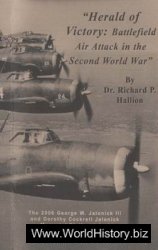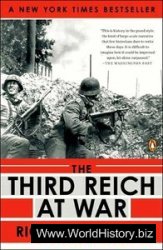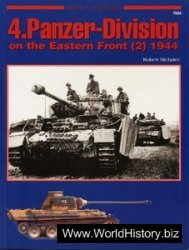The full moon rose shortly after midnight and the scout squads sent out to Gossler's detachment reported that this unit was located with its left flank about half a mile southeast of Mount Cosna summit. It had sustained heavy losses and urgently requested support for the enemy was six hundred yards away and occupied very strong positions.
At 0100 I went on reconnaissance with some of my officers in order to examine the terrain in front of the right half of our position. I wanted to close the gap between Gossler's detachment and my right flank with a company before daybreak, and I also wanted to move my own position forward to within attack distance of the hostile positions east of Mount Cosna; but Major Sproesser did not agree to that. He ordered the two Bavarian battalions to break through the hostile positions northeast of Mount Cosna at dawn, while units of the mountain battalion under my command followed the Bavarians in second line, prepared to exploit a successful breakthrough as far as Nicoresti.
Even before daylight we began to receive heavy artillery fire from a northwesterly direction—that is, from the left rear. It came from the heights on the far side of the Slanic valley. Their fragmentation effect was slight, but the shells dug craters twenty to twenty-six feet in diameter and nearly ten feet deep in the soft loamy soil. Lumps of earth fell in an area a hundred yards in diameter. Sleeping was out of the question and we had to move whenever the hits began to come too close. The fire increased and other batteries to the east and north selected Mount Cosna as their target, with the result that things around the summit became most uncomfortable.
Shortly before daybreak, two Hungarian Honved battalions which had been attached to Major Sproesser, arrived on the summit. One of them deployed on arrival, passed through my detachment and without orders proceeded to attack the Rumanian positions east of us. It suffered heavy losses and increased the hostile artillery fire.
I was much relieved when I led my detachment, consisting of the 5 th, 3rd, and 2nd Companies, the 3rd Machine-Gun Company, a Honved rifle company and a Honved machine-gun company out of the endangered areas. The two Bavarian battalions had started out ahead of us in order to execute their mission of breaking through the Rumanian position northeast of Mount Cosna by daybreak. A successful breakthrough would open the road to the plains and hasten the collapse of the Rumanian Mountain front south and north of the Ojtoz valley.
We crossed the west slope of Mount Cosna in a long column about six hundred yards below the summit and we were often endangered by Rumanian shells of varied calibres, which struck all about us in a most unpredictable fashion. Marching in the cool of the morning made us feel very cheerful. After a half hour's march through light undergrowth on a steep slope, we reached the ridge descending from the summit of Mt. Cosna north toward Elevation 491. Tall fir trees covered the steep northeast slope and below on the left were small sections of a continuous fir forest. Through the firs we got a bird's-eye view of the Rumanian positions northeast of Mount Cosna, which the two Bavarian battalions had to penetrate; they consisted of carefully developed trenches with continuous broad obstacles out in front. Numerous communication trenches led over the bare ridge to the wooded zone on the east slope; between us and the hostile position was a draw which widened toward the northeast and whose slopes were covered with brushwood.
As yet, the hostile positions had not been taken. Twelve to sixteen hundred yards north of us, we saw units of the Bavarian battalions in the broad draw just in front of the Rumanian positions, engaged in a hard struggle with the positions' garrisons.
We passed a group of wounded from the 18th Reserve Infantry Regiment and heard that all was not well up forward. Their leading battalion came upon the hostile position suddenly and suffered heavy losses (about three hundred wounded) from small-arms fire, with the net result that the breakthrough into the hostile position failed.
On the strength of this report, I ordered the detachment to fall out and rest. At the same time I telephoned Major Sproesser — wires had been laid along our advance — to inform him of the existing situation north of Mount Cosna. I ventured the opinion that since the Bavarian attack had miscarried, the only chance of taking the well-constructed position northeast of Mount Cosna was with very strong artillery support. This was promised for the forenoon. Since there were no artillery observers forward, I offered to direct the fire from my present position which was an admirable observation post.
We examined the possibility of getting down into the hollow without being observed but could find no concealed avenue of approach, for the trees were too widely spaced. I adjusted my first artillery fire at 1130 and at that time my detachment began its descent in column of files with twenty pace intervals between men. My intention was to deliver a short but heavy artillery concentration and then smash into the position five hundred yards northeast of Mount Cosna summit.
Fire adjustment proved to be a slow process, but I finally got the centre of impact of an Austrian howitzer battery onto the Rumanian positions, only to hear that all the artillery had been ordered to cease fire for the remainder of the day because of changes in position and ammunition shortages. Meanwhile, the Rommel detachment reached the southeast part of the hollow despite lively Rumanian artillery fire, for the enemy did not fail to observe the descent of seven hundred men. We found ourselves among clumps of bushes some three hundred yards from the enemy obstacles and out of his line of sight. One man was wounded slightly during the descent. I went down to the detachment and found that telephone wire had been laid.
The situation did not seem too promising and attacking an alerted enemy without adequate artillery support was out of the question, for the wired-in positions were much too strong. A daylight withdrawal over the steep northeast slope of Mount Cosna was equally unattractive in view of the excellent enemy observation and his ability to punish us severely with artillery and machine-gun fire. The men could run down the slope, but would move very slowly uphill and would offer excellent targets for the Rumanian artillery and machine guns. Heavy losses were unavoidable should the enemy decide to plaster the depression with artillery and mortar fire.
In spite of the unfavourable situation, I decided to attack the Rumanian positions without artillery support. I knew my men could do it and it was better to be a hammer than an anvil! Skilled scout squads reconnoitred the hostile obstructions and the positions behind them. In order to run in under the expected hostile artillery fire, I moved the detachment up through the bushes to within two hundred yards of the enemy position and made my preparations for the attack in the small draws in that area. The machine gun companies located some positions up on the slope to the right, from which they could deliver supporting fires. The results of reconnaissance were not unfavourable and the enemy gave no signs of having noticed our offensive intentions. I was just about to order the two machine-gun companies to move into their reconnoitred positions, when the following order came over the telephone from Major Sproesser:
—The Russians have broken through in the Slanic valley to the north, and are now apparently about to come up on our rear. The Rommel detachment and the two Bavarian battalions withdraw immediately to the ridge half a mile west of Mount Cosna.”
The group staff was heading there and I was ordered to transmit this order to the 1st and 3rd Battalions of the 18th Bavarian Reserve Infantry Regiment, and to cover their retreat.
It was obvious that the greatest difficulties would result from daylight withdrawal from the hollow in full view of the hostile force. The moment the enemy observed our retirement, he would hit us with machine-gun and artillery fire or launch an attack. In either case heavy casualties could not be avoided. The Russians caused me much less worry, since I hoped to reach the ridge before they did. Failing that, there would have to be a quick and fierce thrust to sweep them off the ridge.
Under the command of Lieutenant Werner, of the Wurttemberg Mountain Battalion, I sent out the two Hungarian Honved companies to climb the northeast slope of Mount Cosna (now lying in shadow) with the summit as their objective. With the other four companies, I myself sought the best way out through the underbrush, first in the direction of Hill 491, and later, towards Headquarters Knoll. Shortly before we reached Hill 491, a few men were slightly wounded by Rumanian machine gun fire.
Once in the vicinity of Hill 491, I sent the 3rd Company to occupy the lower part of the ridge (788-491) with the task of making contact with the two Bavarian battalions. I had sent an officer to inform the Bavarians of the orders received from Group Sproesser. Unfortunately, the telephone connection had been interrupted. Quite by chance, however, I did overhear a telephone conversation regarding Hill 491 which indicated that Group Headquarters, from the latest reports, was now more optimistic about the situation than it had been a half hour before.
Thereupon I moved the 2nd Company by the shortest route to the ridge leading northward from Headquarters Knoll. The company was to organize the ridge six hundred yards north of Headquarters Knoll and was to provide security and reconnoitre in the direction of the Slanic valley. I ordered all units, except the 3rd Company, to march to Headquarters Knoll while I stayed with the 3rd Company. In the course of the next hour both Bavarian battalions succeeded in disengaging themselves from the enemy.
As soon as I saw they were being successful, I took the 3rd Company and started for Mount Cosna. The 1st and 6th Companies were still on the Cosna summit, which the increased bombardment had turned into a field pockmarked with all sizes of craters. I left the 3rd Company on the summit as a reinforcement to the garrison, reported to Headquarters Knoll, and asked permission to go to the hospital, for I was completely exhausted and did not feel able to continue in command. The bandage on my left arm had not been changed since morning, and so I gave up command of my companies and went to get some rest near headquarters. It was a pitch-dark, warm summer's night.




 World History
World History









